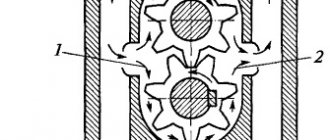API and ACEA Specification
This indicator means, or rather helps, professionals and amateurs alike decide on the choice of motor oil. Using motor oils of the required category will extend the life of the engine (gasoline and diesel), reduce the level of carbon deposits, help reduce fuel consumption and improve the quality performance of the engine.
- API SN – motor oils for gasoline engines from American and Asian car manufacturers;
- ACEA A3/B3 - this type of oil has high performance characteristics. Designed for diesel and gasoline engines.
Manufacturing tolerances and barcode
Unlike American and Asian oil producers, Europeans have come up with a production tolerance system. If we consider European products specifically, then production tolerance is the most important parameter when choosing a product. The indicator means that the product has passed certification and “quality control” by the car plant and is recommended specifically for a specific car.
Using a barcode, you can obtain information about the country of origin, the manufacturer itself, or the branch (if there is one) in which the fuel and lubricants were produced. To determine all of the above parameters, there is a special table in which, by comparing all the numbers, the buyer will be able to find all the necessary information.
The check digit is used to verify the authenticity of the product.
Expiration dates and batch number
- Take a photo of the product batch number (on the oil container it is indicated at the bottom of the canister) and send the photo to the manufacturer;
- Expect an extremely fast response with the information you are interested in (manufacturers who care about their reputation will definitely answer you).
Pseudo-labeling as a publicity stunt
On many modern oils you can find such inscriptions as “Lux”, “Ester”, “Contains smart molecules”, etc.
Each label is loaded with various information that does not have a technical background, which is designed to attract the buyer's attention and distinguish the product from a number of similar ones. When buying new fuel and lubricants, you can not pay any attention to these parameters - there is simply no necessary information here
We have reviewed various data. Now you need to put them into practice and figure out exactly how all the information received will “work” in practice.
Shelf life of transmission oil and engine oil
Let's start with the fact that transmission oils are used in gearboxes, gearboxes, gears, transfer cases (transfer cases), etc. The main task is to create a stable oil film on parts to protect against dry friction and direct contact of mating loaded surfaces.
In any case, both engine and transmission oils, ATF fluids, oils for transfer cases, gearboxes and other mechanisms contain a large number of different additives that make it possible to obtain the desired properties of the lubricant, taking into account the characteristics and conditions of its operation.
If we talk about gear oils, over time such products, after being poured into the unit, become contaminated and also lose their properties. The liquid ceases to protect the box at high and low temperatures, oxidative processes are activated, and old oil is not able to effectively resist corrosion.
It is for this reason that regular transmission oil changes are required. However, in this case, everything is more or less understood, since the oil “works” in the unit and “ages”, the additives are actively used.
As for oil that is stored in a container and not used, in this case it may seem that the shelf life is unlimited, since the liquid does not “work” in the unit, it is not affected by an aggressive environment, etc.
Manufacturers indicate that oil can be stored at temperatures from +10 to +25. Higher temperatures can cause oxidation processes to begin prematurely. In turn, temperatures below the recommended may cause sedimentation and deposits.
It turns out that gear oil can be stored in a dry place, the temperature should not be higher than + 25 degrees and not lower than +10, and direct sunlight is also not allowed. In this case, the shelf life of quality products from well-known manufacturers is 5 years.
It is quite obvious that if we are talking about using a small amount “for topping up” (for example, about 1/10 of the total volume), you can use the liquid in urgent need. However, it is strongly not recommended to fill such oil into the box, axles or transfer case in full as part of a replacement.
Now let's move on to engine oil. As with gear oils, its service life and storage are also limited. Additives and additives “age”, which affects the shelf life of motor oil.
Considering that the lubricant has a limited shelf life, it is possible to fill in expired motor oil, but it is not recommended, since the manufacturer in this case does not guarantee complete preservation of the declared properties of the product. In other words, fresh oil should improve the performance of the engine or transmission, but if you fill it with expired oil, the expected improvements may not occur.
At the same time, it is also impossible to say with one hundred percent certainty that the use of such oil will necessarily lead to breakdown or a significant reduction in service life. However, it is still not recommended to constantly use expired lubricants.
Why is expired oil dangerous?
As the engine oil expires, it loses its properties and can no longer support normal engine operation. Here are just the main parameters that change during long-term storage of the lubricant:
- Increase in the amount of ash
. Due to the decomposition of additives, the ash content of the oil increases, which, in turn, worsens the performance of glow plugs, increases the tendency to glow ignition (an uncontrolled process of ignition of the mixture in the cylinder) and piston burnout. - Viscosity
_ The longer the oil is stored, the more its viscosity changes, both up and down, depending on the composition. - Set of additives
. A number of additives in oil have a limited shelf life, after which they may not work correctly or not work at all, and may also change: change specific gravity, freezing point, kinematic viscosity and other parameters.
How should you choose motor oil?
The appearance of a strange odor is one of the signs of spoiled motor oil.
Today there is a huge selection of different oil products. Do not assume that they are all equally good or will fit any engine. This is far from true. When choosing wisely, you need to consider the following:
Recommendations from the manufacturer. The label must indicate which vehicle, specification and engine the product is intended for. Often, the recommendations of the company that released the product mean clear instructions included with each unit sold.
But even in this case, you should pay attention to chemical additives to improve the performance of the fuel. Additives. Oily substances intended to improve the performance of the fuel system
There are different selections of these products, so you need to pay attention to the specifications. They are of different classifications. Tolerance This means a certain standard by which the quality of the product being sold is determined. The approval describes all the characteristics of the oil, and it can only be obtained when it has been certified by the plant where it was produced. Marking. It can show that the lubricant can be used with both gasoline and diesel fuel in both engines. For a product without markings, the label or instructions must indicate on which unit the product can be used. Viscosity. It must be taken into account when purchasing a product. We are talking about the operation of the gap and pistons. The viscosity must be specified in the instructions supplied with the product. Best before date. As a rule, it is not prescribed. Only on some packages can you find an approximate period.
Typically, lubricant, as practice shows, is usable for an average of 5 years. But the service life may well be increased to 10 years if the following conditions are met:
It is advisable to store engine oil in closed cans - this will increase its service life.
Store the material in a sealed form, preferably in a canister. Any particles that get inside an open container can deprive the oil element of its normal operating properties.
A closed canister is the most important rule. Storage temperature should not exceed 20 °C. Otherwise, the product loses viscosity and oxidizes. It is advisable to completely avoid exposure to sunlight
When they come into contact, including any light, the liquid loses its transparency and a sediment forms. Therefore, the oil must be stored in a tight canister not only away from sunlight, but also from any light in general. Do not allow the product to freeze, keep it in greenhouse conditions. When supercooling occurs, waxing and condensation occur. Avoid exposure to moisture. Water mixed with chemical compounds forms insoluble particles. This irreversible process reduces the working life of the product.
Being in a canister can increase the shelf life of motor oil if the other points are observed. Sealing protects the liquid from the negative influence of the environment.
If you follow certain rules of caution, the oil can be stored for up to 10 years. This is significantly more than transmission fluids, which last only 2 years
When buying oil, you need to start from its release date. From here you can safely count 5 standard years of storage of the lubricant.
What period of life
Motor oil is an important element for trouble-free, proper operation of the engine, as well as the key to the long life of the car. It reduces friction between parts, thereby reducing their wear.
It is better to trust the world leaders in production - Zic, Castrol, Mobil, Motul, Shell Helix, Total. They have many years of experience in the production of various subtypes of engine fluids and, subject to proper storage, guarantee its properties until the expiration date.
In the engine
Experts recommend replacing engine fluids at least once a year. This is due to changes in the properties of additives, which gradually cease to perform their functions, neutralizing the lubrication effect. This means that the service life of the engine oil is about a year.
In a canister
The ideal storage option is a factory-made jar with a tightly sealed lid. By minimizing the impact of external factors, the contents will last the entire period guaranteed by the manufacturer. The shelf life of motor oil in a canister is 3–5 years.
The canister is also acceptable as a storage container. It will protect from sunlight and sudden temperature changes. The only risk with a metal or plastic frame is the possibility of a chemical reaction and the formation of sediment. But these processes will not spoil the oil for 3 years.
Mineral
Minerals are obtained from petroleum by distillation and distillation. There are naphthenic, paraffin and aromatic. This type is recommended for use in cars older than 10 years, as it is characterized by high viscosity compared to synthetic ones. The shelf life is shorter than other types, 3 years.
Synthetic
For production, hydrocarbons and ethers are used, triggering chemical reactions between them. This gives the product resistance to elevated temperatures. Recommended for vehicles with heavy loads. Its shelf life is up to 5 years.
Winter
It is characterized by low viscosity, which allows it to remain on the surface of engine parts at low temperatures. On the label it is indicated by a numeric code with the Latin letter W in the middle. The first digit before W means minus permissible temperature, after W – plus.
Summer
Summer does not have a letter code, but is indicated by a number. The higher the average temperature in the region, the larger the number should appear on the packaging.
All-season
Manufacturers are striving to switch to the production of all-season engine fluids. This is convenient because it does not require replacing the fluid, which has not yet lost its working properties, in accordance with the time of year. This lubricant is characterized by a large temperature range indicated on the marking, for example:
- 5W30 – from -25 to +20 °C;
- 5W40 – from -25 to +35 °C.
Diesel
Engines running on diesel fuel require special motor oil, since the principle and mode of their operation differs from gasoline ones.
Chemical processes occur hundreds of times faster, so liquids deteriorate and lose their properties faster.
| Type | Shelf life (months) | |
| In a canister | In the engine | |
| Mineral | 36 | 6-12 |
| Synthetic | 60 | 6-12 |
| Semi-synthetic | 36-60 | 6-12 |
| Winter | 36-60 | 6-12 |
| Summer | 36-60 | 6-12 |
| All-season | 36-60 | 6-12 |
| Diesel | 36-60 | 3-6 |
Deadlines
Let's consider the shelf life of the most popular brands of automobile oils:
- Mobile, Castrol, Motul, Nissan 5w40, Lukoil - 5 years;
- Shell - 4 years;
- ravenol - 18 months;
- esso - 4 years;
- Total (Total Quartz) - 5 years;
- liqui moly - 5 years;
- Hado (Kharkov) - 5 years;
- Elf - 5 years old.
After the specified period expires, the lubricating fluid deteriorates - additives precipitate and characteristic properties are lost.
Information about the expiration date must be indicated on the label. You can check the authenticity of the barcode on the manufacturer's website.
Synthetics and semi-synthetics
Synthetic products are created artificially, and accordingly, their storage period is the longest (5 years), since the impact of the environment is minimal.
Semi-synthetic is produced with the addition of minerals and has a shorter shelf life.
Each type of fuel and lubricants has a range of applications:
- For an engine with low mileage, as a rule, a synthetic engine with a viscosity of 0W-20 to 5W40 is chosen. This is a very fluid substance, its use is explained by the small gaps between the cylinders and piston rings.
- The most common fuels and lubricants on the market are 5w30 and 5w40. What is the difference between them? — the difference is in viscosity: 5w40 is used in winter, 5w30 in summer.
- If you operate a car with high mileage (200 thousand or more), in certain cases it makes sense to switch to a thicker 10W40 oil.
The Mobil company produces Mobil Super 2000 in plastic bottles: 1 and 4 liters. There are also more budget analogues on the market, for example, KIXX, which is of high quality and reasonable price.
Mineralka
From 3 to 7 years.
Mineral lubricant consists of natural substances and is characterized by an easy production method. The chemical formula is much simpler, which determines the relatively low price of the product. But the service life is significantly shorter than that of synthetics and semi-synthetics. And this is not the only disadvantage of mineral liquid. In low temperature conditions, thickening occurs and the car becomes harder to operate, which can lead to unpleasant consequences. Mineral products are used in heavily worn units, as well as in gasoline and electric saws to lubricate the chain.
To operate a two-stroke chainsaw engine, a mixture of gasoline and special two-stroke oil is required. You can prepare the mixture for a chainsaw at home: take 100 ml of lubricant for 4 liters of gasoline.
Diesel oil
It is characterized by a large presence of detergent additives. For a turbocharged diesel engine, you need to choose higher quality materials, since the presence of a turbine causes significant overheating of the driving elements. As a rule, turbines are installed on expensive cars, which means expensive maintenance.
They also produce universal fuels and lubricants for diesel and gasoline engines; it says so on the bottle: for diesel and gasoline.
For two-stroke engines
To operate a two-stroke engine, you need an appropriate mixture of oil and gasoline. In the assortment of specialized stores you can always find Motul for 2t outboard motors. This is a very high quality, but not cheap product.
Transmission
Up to 5 years.
Gear oil is produced using the latest technologies: it has a high degree of purification, is environmentally friendly and affordable. It is recommended to change once every 5 years or according to the mileage specified by the manufacturer. The ATF marking means that this fluid is intended for the gearbox. For example, the well-known company LIQUI MOLI produces the Top Tec ATF model.
MULTI ATF 1L produced by MOTUL is intended for automatic transmissions of most American, European and Korean cars, as well as power steering fluid for a number of modern vehicles.
Open and closed
Different containers are used to package these products: from 1 liter to a barrel. Storage conditions are indicated on the packaging and must be followed. It is better to avoid direct sunlight, sudden temperature changes and freezing.
Of course, you should not store fuel and lubricants in the open. Despite the fact that when sold for bottling in a barrel, the container itself is kept tightly closed.
The shelf life of products in open containers does not exceed 3 years.
The product is always cheaper by bottle, but beware of unscrupulous sellers who may fill and sell expired or lower quality liquid.
What storage conditions are needed?
Storage conditions for engine oil may vary. It depends on the technical regulations of the manufacturing company regarding the composition. But there are general storage rules:
- Technical engine lubricant can be stored, as recommended by regulations, for 5 years. This should be done in a tightly closed container at a temperature no higher than +20°C.
- You should not buy a large amount of the product in advance. Otherwise, after opening the container, you will have to use it up within a year.
- Do not pour oil from the original packaging into a bottle. It will be affected by oxygen in the process. This will reduce the guaranteed shelf life.
- It is undesirable to store raw materials in the car itself, since it will not be possible to create the required temperature and humidity parameters there.
- Do not allow temperature fluctuations in the room. This applies to raw materials located in the garage or on the balcony during the winter months. After storing in cold air, the canister with the composition should be shaken before use.
- The liquid should not come into contact with air.
- When storing, be sure to avoid active sun.
Recommended shelf life of technical lubricant for the engine
Optimal conditions are a dark place with a temperature of no more than 20°C. During the purchasing process, you should study the labels on the container. The labels indicate the optimal storage characteristics and shelf life of synthetic motor oil, including the popular 5w30 and 5w40. It must be remembered that for a semi-synthetic product there are different indicators; they are also indicated on the labels.
Technical regulations
According to GOST, the shelf life is no more than 5 years.
The largest number of manufacturers also assure that, if the conditions are met, machine lubricant can be used for five years (if the canister has its original packaging, the lid of which is tightly closed). But it is necessary to change it in the engine once every 6-8 months (ideally, measure the time of use in engine hours - this will be much more correct).
The permissible period for using this product in its original packaging after opening according to GOST is 3 years.
It is advisable to select the lubricant individually, taking into account the engine type, mileage and operating conditions.
Shelf life of gear oil in a canister
In general, the simpler the composition of the oil, the longer it retains its properties. Therefore, if engine or transmission oil is stored for five years or more, it will still meet its specifications, but may no longer meet later industry requirements. The composition of such liquids is often very carefully verified. Therefore, subject to all favorable storage conditions, they should be stored for no more than two years. Storage in unprotected conditions may allow water to enter such lubricants, causing the liquid to resemble milk or even take on the consistency of mayonnaise.
Moreover, water contamination can cause corrosion and rusting of metal containers. If you have large quantities of expired product, please consult a technical advisor who will arrange to check whether they are fit for use.
What is the situation with motor oil for a car when the can is already open? How long does this oil have a shelf life? It's very difficult to tell from an open can. Depends on temperature and humidity. When the temperature changes, the can “breathes,” that is, the oil contracts in volume as it cools and sucks in air. When heated, the oil expands in volume and displaces air. With this air, moisture and dust enter the oil, which eventually condense in the oil.
I would pour the oil into a clear, dry container and see if any sediment has formed. The sediment can be mixed and on the go. But seriously, it often happens that you buy 5 liters, 1 liter remains and accumulates from replacement to replacement. And the question arises, is it still possible to use it? If only they could come up with a package from which you pour oil, but it still remains closed.
Like, for example, a box of wine. Well, this is, of course, fantasy. Another question arose. Okay, shelf life is 5 years. We bought it when there were 2 months left until the deadline, for example. How long can it be used in a car? Will it immediately lose its properties as soon as the load is applied? For example, a person changes his oil once a year.
What should I do? I would hardly fill in oil older than x years! It also kills when you see barrels of oil standing outside in the sun or frost. Therefore, I think it’s always better to fill it with fresh stuff! Some European companies give years for oils in iron barrels and 5 years for plastic cans. Iron and other metals promote faster oxidation. Turbine, This has been on the market for a long time. Called Bag-in-Box or Ecobox. This is cool! This is just a dream! I want such a Bag-in-Box!!!
The Americans, after all, are great. They know how to come up with know-how in “ordinary” things. I recommend to everyone. You can buy a large container and have many replacements ahead at once. And the shelf life is longer.
Is there a video of how it works? How is it bottled? Maybe it happens, if anyone has seen it, please tell me. Saw it at Castrol USA. I have not met Europe. How long can oil be stored if stored in a container? I recently purchased a tank to store oil. Plastic is neutral to oil; in the right barrels and metal canisters, the inside is varnished so that the oil does not come into contact with the metal.
This is true, but, unfortunately, the plastic canister “breathes” on its own. As an example: we pour distilled water into a plastic canister, and after a year its pH has shifted to the acidic side. This is due to the fact that plastic does not allow liquid to pass through, but air, which contains carbon dioxide, does pass through. Yes, and a little moisture comes in too. The fuller the jar, the less impact. But, probably, the devil is not as terrible as he is painted. More on this later. Oils Category. Hydrocracking Mineral Semi-synthetic Synthetic.
Men Women Promotional products. Engine oil shelf life 24 messages. Add a new message. What determines the shelf life of oils? Some manufacturers write 5 years, others 3 years? Published: City: Odintsovo, M. River What generally determines the shelf life of oils? Troll oil. Turbine What is the situation with motor oil for a car when the can is already open? Leha Turbine, This has been on the market for a long time. Troll Oil When the temperature changes, the can “breathes,” that is, the oil contracts in volume as it cools and sucks in air.
Lyubimov Syoma. In order to respond to messages, you need to log in. River On the forum with Turbine On the forum with Oil Troll On the forum with Leha On the forum with DelfinDark On the forum with Beard On the forum with Nail On the forum with It turns out that several manufacturers make such containers? Belaz On the forum with Jul On the forum with Smolenskaya On the forum with Primus On the forum with Syoma Lyubimov On the forum with
Dependence of oil shelf life on conditions
The ideal storage conditions for synthetic motor oil, under which it retains its performance characteristics, are as follows:
Characteristics of motor oils
- Absolutely sealed packaging. This is necessary so that no substances from the external environment mix with the oil. Additives and base components can react with water vapor, air, dust particles and other chemically active elements. If the seal of the package is broken, the shelf life of the oil is significantly reduced and depends on environmental conditions. It is worth considering that when the material is poured into a non-original container (for example, plastic bottles), it is already mixed with chemicals from the external environment.
- Average room temperature is about 20 °C. Of course, oil is used in much more extreme conditions. However, it should be stored at room temperature. If the room is too hot or cold, the components included in the material cease to be in a bound state. This, in turn, leads to separation of the oil mixture and the impossibility of its further use.
- Normal humidity and other climatic parameters. Even when storing oil in its original packaging, the container may not be tightly sealed. This will lead to the fact that in the event of an extreme state of climatic parameters, chemical reactions in the material can be activated, leading to complete unsuitability.
- No direct sunlight. This, however, is a universal requirement for storing any product. Under the influence of solar radiation, motor oil not only heats up, but in some cases there is an acceleration of chemical reactions of oxidation and decomposition caused by the ionization of the atoms of the substances that make up the material. In addition, due to an increase in the surface temperature of the package, depressurization may occur.
- No constant vibrations. Despite the fact that periodic mechanical influences only benefit the oil - it mixes independently, maintaining a homogeneous texture throughout the entire volume, however, monotonous non-stop movements can lead to separation.
Thus, a cool, dry place that is not exposed to sunlight and located away from, for example, constantly operating machines, is ideal for storing oil. In this case, the shelf life of the material is about 5 years, regardless of what is indicated on the packaging. The factory canister, be it plastic or metal, is prohibited from opening.
When storing materials in unsealed packaging (for example, an already opened canister or plastic bottle), the shelf life is reduced to 2-3 years specified by the manufacturer. In reality, it is assumed that the oil does not come into contact with either water vapor or dust in the air.
What's the result?
Taking into account the above, it becomes clear that transmission and motor oils have a limited shelf life. Moreover, after removing the cap (depressurization of the original packaging), the shelf life of the oil can be significantly reduced.
For this reason, it is necessary to purchase oils that are not expired. You also need to pay attention to the conditions in which the oil is stored. Even if the lubricant is relatively “fresh” (the expiration date must be marked on the packaging), but the container is exposed to direct sunlight, the oil is stored in extreme heat or cold, etc., then from purchasing such It is better to refuse the product.
Sources
- https://avtozhidkost.ru/srok-godnosti-transmissionnogo-masla-est-li-on/
- https://hraneniegid.ru/drugoe/skolko-sostavlyaet-srok-godnosti-transmissionnogo-masla.html
- https://KrutiMotor.ru/srok-godnosti-transmissionnogo-i-motornogo-masla/
- https://lukoil-shop.ru/articles/kak_pravilno_khranit_motornoe_maslo/
- https://zen.yandex.ru/media/news_avto/srok-hraneniia-transmissionnogo-masla-5ce50f6c7ebafe00b3397778
- https://motoroill.ru/transmissionnoe/obem-masla-v-korobke-peredach.html
How to make sure the oil is suitable for use
- There should be no sediment in the structure of the product. The exception is synthetic oil, in which a minimum amount of sediment is allowed.
- The structure of the motor fluid should be homogeneous and dense. If the density is different, either liquid or viscous, oil should not be used. This issue can be easily resolved. Using a “drop” test. Take a piece of newspaper or other paper that has a porous structure, apply a drop of oil, and observe the process: if the liquid quickly spreads over the paper with the formation of rainbow circles, you can conclude that the oil “lives” and is suitable for use. If it has frozen into a drop, you cannot take it.
- If there is an unpleasant odor reminiscent of the “aroma” of rotten eggs, you can determine that the oil is highly oxidized. This can cause a corrosion process on metal parts, as a result of which the motor will soon fail.
Signs of expired
The easiest way to determine expired oil is by looking at the label on the storage container, simply by adding the expiration date to the date of manufacture.
If the need arises, you can determine expired oil by external signs.
Expired and spoiled oil changes its chemical composition and structure - the following appear:
- clots;
- suspensions;
- dark spots;
- sediment;
- condensation on the walls of the storage container.
What does it depend on?
Like any other active chemical products, the shelf life of motor vehicle oil depends primarily on storage conditions - temperature exposure, exposure to sunlight and air humidity.
Packing density is also important. The presence of additives in motor oil is also important.
Any oil, even mineral oil, has them in its composition. However, their quantity and chemical composition differ among different varieties and names.
The presence of additives in motor oil is also important. Any oil, even mineral oil, contains them.
However, their quantity and chemical composition differ among different varieties and names.
The more additives there are, the more likely it is that a chemical reaction will occur that will ruin the engine oil.
From here you can find out the composition of the car first aid kit and its expiration date.
Selecting a spray gun
When choosing a device, focus on the following parameters:
Tank volume. In inexpensive models, the tank volume is 50 ml. In spray guns with capacious receivers up to 600 ml, the characteristics are much higher. Tank location. The container can be in 2 positions: top and bottom. At the top, the paint is supplied under the force of gravity. At the bottom, the suction force of the sprayer itself is created. A spray gun with a lower reservoir is much more convenient. While applying paint with a gun, you can vary it and also place it on the table. Engine power. When choosing models, they focus on power up to 1.3 kW. Pressure. Basically, it is up to 8 bar. If the pressure is higher, the compressor is switched off. For more powerful and expensive spray guns, the pressure reaches 10 bar. Performance
The main indicator that you need to pay attention to. To make the right choice, it is necessary to multiply the performance declared by the manufacturer by a factor of 0.65
Based on the results obtained, you can choose the right compressor.
How to find out the shelf life of motor oil
In addition to the characteristics, classification, basics, manufacturers indicate the shelf life of automobile oil on the label. Typically the date of manufacture is printed in black permanent ink on the side of the canister.
Since the shelf life of lubricants is quite long, 3 – 5 years. Manufacturers sometimes do not clearly indicate the date of manufacture on the label. You can find it by reading the serial number.
For example, let's look at the serial number H6C2584. After the letter “N” comes the number 6. This indicates that the date of manufacture of this motor oil is 2016. To determine the shelf life of a given motor oil, you need to subtract 2021 from the current year, which gives you the number of years during which the oil is stored. For example, 2021 – 2021 = 1. This means it is fresh and can be stored for another 2 years. Of course, in properly organized conditions.
Mineral motor oil can become completely unusable in 2–3 years. Therefore, when opening a new canister, you should once again make sure of the quality. Carry out visual inspection.
Determination of spoiled motor oil
The shelf life of motor oils largely depends on the quantity and quality of additives, synthetic complex molecules that are evenly distributed throughout the entire base, mineral or synthetic.
Over time, the molecules can disintegrate and fall to the bottom as sediment. At the same time, the engine oil begins to separate. In the upper layers, the liquid acquires a lower density, which increases with depth.
It is recommended to add lubricants with additives to the engine only within the expiration date. After 3 years of storage, use only in extreme cases.
The use of low-quality lubricant leads to malfunction of engine components, even jamming.
When opening a new can of lubricant, you should make sure that the seal is maintained. Check the safety of the cap. Make sure that the first opening control is not broken.
Good quality liquid - transparent. Depending on the variety and base, the shade can vary from light yellow to light brown.
There should be no oxide flakes throughout the entire volume. Some manufacturers, for example Shell or Russian Lukoil, allow the formation of small sediment. However, its layer should be minimal. If the container has been opened previously, dust may be present as sediment. This is not valid for use.
Before pouring it into a car engine, it is advisable to pour the oil into a clean container, such as a glass jar. During the transfusion, watch how the liquid flows. Are there any lumps, clots, sludge flakes, air bubbles, or films? If such inhomogeneities are present, then using engine oil is not recommended.
If the oil is of uniform consistency and color, use for the engine is not prohibited.
Sometimes, in order to restore the properties of damaged motor oils, additional additives are added to it. This is strictly prohibited! By entering into a chemical reaction with the base and specified additives, the additives can turn the oil completely unsuitable for this category of engine. By “restoring” liquid lubricant in this way, you can spend large sums on engine restoration and repair.
How to properly store motor oil
How long motor oil will be stored depends on the place where you have it, as well as on the temperature conditions and the container in which it is poured.
In the garage.
If you meet all the conditions indicated on the packaging (temperature, storage duration), then the lubricant will be stored in the garage without any problems for several years. It happens that you opened a container and used a certain volume of liquid. In this case, it is necessary to quickly find a use for the remaining part.
If the container is opened, its contents should be stored for no more than 6 months. True, certain brands have an increased shelf life in accordance with the warranty, but it should be remembered that after a year the oxidation process begins in the lubricant. We do not recommend using such a product because it can damage vehicle components.
Semi-synthetic fluid does not like frequent temperature changes. For such lubrication, equal heating of the air is required, that is, you need a room with a constant temperature and without access to direct sunlight.
In a canister.
According to the instructions, in a canister that has not been opened, motor oil can be stored for about five years, maintaining a temperature regime of up to +20 ° C. If you have significant supplies of lubricant and you are going to find a use for them in the near future, then you should check whether the caps on the containers are tightly tightened and the storage conditions.
There are manufacturers who guarantee that their synthetic product, even if it is in an already opened container, can not change its properties for five years
What is important here is what is included in the product and whether international quality standards have been met.
The packaging will help you understand how long motor oil can be stored and under what conditions it should be stored.
For the most part, the grease from the started container is completely used within a year. However, you should not make large stocks of this product.
Manufacturers of products do not recommend pouring it from the “original” container into another container, because oxygen will combine with the lubricant and the shelf life guaranteed by the manufacturers will decrease.
In the car.
You should not keep a canister of liquid in a car, because it is quite problematic to create the conditions necessary for proper storage, that is, maintaining the required temperature and humidity.
The air in the car is usually warm, and in the summer it can even be hot
This temperature regime negatively affects the properties of motor oil.
If the machine is actively used, then, in addition to temperature fluctuations, there are also different levels of humidity. In rainy weather it is naturally higher. On a hot day - lower. Each parameter affects synthetic motor oil, mostly negatively.
Try to use the most optimal places for storage, and leave the vehicle as a last resort.
In winter.
Car enthusiasts are wondering whether it is permissible to leave lubricant in the winter in a garage that does not have heating, which means it is quite cold there.
Experts say that this can be done if you follow a few simple rules:
– The temperature near the container should be constant, no sudden changes. The liquid should not be allowed to freeze, as it will then lose its properties.
– Check the plugs. Air should not get inside the canister, otherwise oxidation may occur. Ideally, the container should be sealed.
Before using lubricant that has been in a cold room for a long time, shake it. The liquid will mix and there will be no sediment.
In stock.
Here, mineral liquid is stored in accordance with requirements that must be strictly followed, because large batches of products are stored there, and not a single product.
Firstly, the temperature must be constant. It is necessary to read the manufacturer's recommendations indicated on the packaging.
Secondly, humidity is maintained at the same level.
Thirdly, old canisters of liquid are stored in one place, and new ones in another. You also need to constantly check the expiration date and remove those that are already out of date.
The ideal warehouse is a dark and cool room.
On the balcony
You don't have a garage, but you do have a balcony. The question arises how long motor oil can be stored there. Nothing new. The conditions stated on the packaging must be met. Moreover, this is a place in the apartment where in a certain season the air condition is almost always stable: both temperature and humidity. You just need to make sure that the sun's rays do not fall on the container with the liquid.
Create an account or sign in to comment
This is where all the similarities end. Basic properties of ATF ATF oil is one of the most complex fluids in its composition among all lubricating mixtures used in a modern car.
High demands and standards are imposed on such a lubricant. The oil must have a lubricating effect - due to this, friction is reduced, and at the same time wear in the gearbox elements is reduced. In this case, the friction forces in the friction groups should increase.
Ford Expedition Transmission Fluid and Filter Change
This will reduce slippage of brake bands and other components. Also one of the important properties is heat removal. The oil has high thermal conductivity and fluidity characteristics. In this case, the liquid should not foam during operation. An important point is stability, namely the absence of oxidation processes when heated to high temperatures at the moment of contact with oxygen.
Non-original oils in automatic transmission Ford Focus 2
Additionally, the oil must have anti-corrosion properties. This is necessary in order to prevent the formation of corrosion on the internal components of the mechanism. Automatic transmission fluid must be hydrophobic - this is the ability to push moisture out of the surface.
In this case, it is necessary that the liquid retains its fluidity and hydraulic characteristics. ATF grease has stable characteristics and a high compression ratio over the widest possible temperature range. Another point is the decrease in penetrating ability through the automatic transmission and the presence of dye.
For the Dexron-2 specification, the kinematic viscosity is 37.7 at 40 C. At degrees, the same parameter will be 8.1. For Dexron-3, kinematic viscosity is not standardized at all, as well as for other specifications. The same parameter for Dexron-3 will be 10 if the pressure is MPa.
Flash point - no lower than degrees for Dexron For Dexron-3 - this parameter is degrees, but not higher. Compatibility of ATF oils Any oil, no matter whether it is mineral or synthetic, can be mixed without any consequences.
Naturally, more modern liquids have improved characteristics and properties. If a modern fluid is added to an ordinary one, this will improve the properties of the poured oil. The older the specification, the lower the performance it will have. Also, the shelf life of ATF oil is much lower. Experts recommend changing this fluid every 70 thousand kilometers.
It is worth noting that many modern manufacturers do not regulate the replacement period for this fluid. It is filled in for its entire service life. But when a car runs for thousands of kilometers on one oil, this is not very good. The fact is that the fluid in the automatic transmission is working. It is she who transmits torque from the engine to the wheels. This oil is constantly in action, even when the car is at neutral speed.











